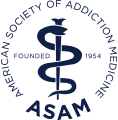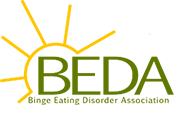Anorexia nervosa is a severe mental health illness that includes restricting food, which can lead to extreme weight loss. The desire to refrain from eating comes from the severe fear and anxiety of gaining weight or becoming overweight.
Understanding Anorexia
Learn about anorexia
Those who have this mental illness will often go to extreme measures to prevent themselves from gaining weight, even if it adversely impacts their health. The use of diuretics, laxatives, and/or enemas are common in those who suffer from anorexia, as is the execution of ritualistic behaviors when it comes to eating or preparing food. Excessive exercise is another manner in which individuals who are afflicted with anorexia attempt to lose weight. The overwhelming fear and anxiety surrounding the possibility of gaining weight, coupled with the accompanying damaging behaviors to prevent weight gain, are known to bring about a variety of mental and physical health problems that can be deadly if not properly treated.
There are two forms of anorexia nervosa that an individual can suffer from. The restricting type, which includes excessive dieting, fasting, and over exercising, and binge-eating/purging, which includes episodes of overeating that end in self-induced vomiting to clear the body of the consumed food. Both of these forms of anorexia can lead to distorted perceptions of one’s body image. In many cases, those who have this disorder view food as dangerous, and any influence from others to eat is considered a threat, and not conducive to their desired weight loss. Thankfully, there are treatment options for those who are battling with this specific mental health condition. Treatment for anorexia can help individuals develop healthy coping skills that will allow them to live balanced and healthy lives.
Statistics
Anorexia statistics
Roughly 24 million people battle with eating disorders like anorexia nervosa. In adolescents, anorexia is the third most common chronic illness, with the average age range of those afflicted falling between 12 and 26 years old. Amongst females, rates of anorexia are said to be .05%. It is reported that 10% to 15% of those diagnosed with anorexia are male. However, this mental illness is not as common in men as it is in women, and men with anorexia nervosa often do not report their symptoms. Anorexia has a high mortality rate and can increase one’s likelihood of developing self-harming behaviors, suicide attempts, and suicidal ideation. The suicide rate in those who battle with anorexia is 12 of every 100,000 suicides each year.
Causes and Risk Factors
Causes and risk factors for anorexia
Experts in the field of eating disorders agree that a variety of factors can contribute to the development of anorexia nervosa. When looking to understand why someone develops this disorder, consider the following:
Genetic: Those who have a close relative, such as a sibling or a parent, with an eating disorder, depressive disorder, or bipolar disorder are more likely to show symptoms of anorexia nervosa. Since this link is often times present, it can be said that anorexia can be caused by one’s genetics. Additionally, studies have shown that the rates of anorexia are greater in identical twins than in fraternal twins.
Environmental: Professionals believe that one’s environment or culture can impact how one views an ideal body image, and, in turn, increases her likelihood of developing anorexia nervosa. In addition, specific occupations, including those who work in fashion or sports, can be more likely to develop anorexia based on the focus that is placed on their physical appearance. Furthermore, those who are exposed to continued stress, abuse, trauma, and/or neglect are more susceptible to developing anorexia, as restricting their food can be a method of controlling something in their lives when all other areas of their wellbeing seem to be uncontrollable. For children and adolescents, enduring teasing regarding weight can cause one to develop anorexia as a means of avoiding bullying.
Risk Factors:
- Exposure to chronic stress / trauma / abuse/ neglect
- Preexisting mental illness or illnesses
- Being in an environment or part of a culture that strongly values thinness
- Being the victim of bullying
- Being female
- Family history of eating disorders or other mental illnesses
Signs and Symptoms
Signs and symptoms of anorexia
The signs and symptoms that one who is struggling with anorexia might have can vary based on the length of time that one has been experiencing the thoughts and behaviors that are connected to this mental health condition. If you are worried that you or someone you love might be battling with anorexia, note the following symptoms listed below:
Behavioral symptoms:
- Lying about food intake
- Abusing substances
- Complaints about appearance
- Constantly checking oneself in the mirror
- Excessive exercise
- Wearing oversized clothing
- Consuming laxatives, diuretics, or using enemas
- Binge-eating
- Self-induced vomiting
- Skipping meals
- Engaging in ritualistic behaviors when preparing food (e.g., cutting food into small pieces, weighing food before eating, chewing food and then refusing to swallow, etc.)
- Frequently weighing oneself
- Rigid dieting or fasting
- Restricting or limiting types of food consumed (e.g. eating only certain vegetables, etc.)
- Denial of hunger
- Refusing to eat
- Making excuses for not eating
Physical symptoms:
- Yellowing of the skin
- Swollen glands
- Erosion of enamel on teeth due to purging
- Intolerance to cold / hypothermia
- Hypotension
- Swelling of tissues
- Broken blood vessels
- Abdominal pain
- Excessive energy or excessive lethargy
- Constipation
- Slowed heart rate / irregular heart beat
- Delayed onset of menstrual cycle or a total absence of menstrual cycle in females
- Presence of fine hair on arms and legs
- Brittle nails
- Extreme weight loss / emaciated appearance
- Failure to meet expected weight for age (adolescents only)
- Failure to achieve physical developmental milestones, e.g. age-appropriate height expectations (adolescents only)
- Flat affect
- Decrease in bone density / broken bones
- Low blood pressure
- Low hormone levels
- Dehydration
- Dry skin
- Thinning hair / hair loss
- Anemia
- Electrolyte disturbances
- Suppression of immune system
Cognitive symptoms:
- Desire to control situations and environment
- Poor impulse control
- Obsessions / compulsions / preoccupations with food, weight, or body shape
Psychosocial symptoms:
- Agitation
- Depressed mood
- Drastic shifts in mood
- Low self-esteem
- Low self-worth
- Feelings of ineffectiveness
- Intense fear of gaining weight or becoming overweight
- Low range of emotions
- Irritability
Effects
Effects of anorexia
Without obtaining treatment for anorexia nervosa, a variety of dangerous effects can occur if the behaviors linked to this illness continue. With the greatest effect being death, below are some of the many effects that can develop when treatment for this disorder is not obtained:
- Suicidal ideation
- Self-harm
- Suicide attempts
- Damage to vital organs
- Heart attack / failure
- Inability to attend school or work
- Inability to adhere to responsibilities or roles
- Social withdrawal or isolation
- Infertility
- Loss of muscle mass / weakened muscles
- Osteoporosis
- Kidney failure
- Digestive system damage
Co-Occurring Disorders
Anorexia and co-occurring disorders
There are many other mental health conditions that can develop along with anorexia nervosa. In some cases, these mental illnesses occur prior to the onset of anorexia. Some of these conditions can include:
- Bipolar disorder
- Substance use disorders
- Obsessive compulsive disorder
- Depressive disorders
- Generalized anxiety disorder
- Other anxiety disorders

























